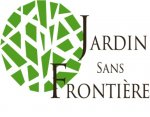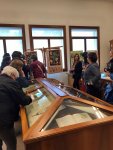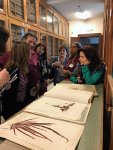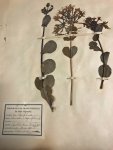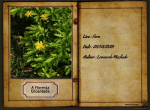accueil site > 45. Archives > Paysage et patrimoine > 12. Pedagogic tools > 17. Pedagogic tools > 0994. 22 - Virtual Herbarium
-
45. Archives
-
Paysage et patrimoine
-
01. Fiches pédagogiques
Disciplines
-
01. Teaching materials
Disciplines
-
02. Jardin sans frontière : une école pour développer les compétences -clés en Europe
- 04. Partenaires
- 05. Rencontres transnationales
- 14. À l’école du jardin. Mobilités de formation dans les jardins d’Europe
- 15. À l’école européenne du jardin. Paroles de formateurs sur leurs formations "entre pairs"
- 16. A l’école auropéenne du jardin. Paroles d’apprenants sur leurs mobilités Erasmus+
- 19. Petit glossaire "européen" du jardin
- 20. Dissémination
- 21. Exploitation locale du projet
- 03. Un nouvel Erasmus+ : Le bleu européen comme étendard contre l’exclusion des adultes
-
09. Erasmus+ partenariato
-
Cammini del Blu in Europa
- 01. Incontri transnazionali
- 05. Progetti blu di partners
- 10. Percorsi europei del Blu
- 20. Storie blu
- 40. Disseminazione
- 43. Transcultural Carpet Blue
- 45. Missive blu
- 46. Glossario blu
- 47. Schede didattiche "Pedagogia del colore blu in Europa"
- 48. Illustrazioni delle schede didattiche : Mostra delle opere degli studenti
-
Giardino senza frontiere. Una scuola per lo slivuppo di competenze chiave in Europa
- 04. Partners
- 05. Riunioni transnazionali
- 14. Alla scuola del giardino. Mobilità di formazione nei giardini d’Europa
- 15. Alla scuola del Giardino. Parole di formatori sul loro addestramento "tra pari"
- 16. Alla scuola del giardino. Parole dei discenti sul loro Erasmus + Mobilità
- 19. Piccolo glossario europeo del giardino
-
Cammini del Blu in Europa
-
11. Erasmus+ Partnership
- 01. Transnational Meetings
- 05. Blue Projects of partners
- 07. European roads of the Blue
- 10. Blue stories
- 40. Dissemination
- 43. Transcultural Carpet Blue
- 45. Blue Missives
- 46. Blue Glossary
- 48. Roads of the blue : the file
- 50. Illustrations of the pedagogic file : exhibition of works of learners
-
51. Garden Without Borders : A School for Developing Key Competences in Europe
- 04. Partners
- 05. Transnational meetings
- 14. At Garden School. Training mobilities in the gardens of Europe
- 15. At Garden School. Words of trainers on their "peer-to-peer" training
- 16. At Garden School. Learners’ words about their mobility Erasmus +
- 19. Small European glossary of the garden
- 20. Dissemination
-
11. Partenariats Erasmus+
-
01. Les chemins du bleu en Europe
- 01. Rencontres transnationales
- 05. Projets bleus des partenaires
- 10. Routes du Bleu en Europe ...
- 20. Histoires Bleues
- 40. Dissémination
- 43. Transcultural Carpet Blue
- 45. Missives bleues
- 46. Glossaire bleu
- 47. Formation pédagogique : fiches pédagogiques et référentiel de compétences clés et transversales
- 50. Illustrations des fiches pédagogiques : exposition des travaux des apprenants
-
01. Les chemins du bleu en Europe
- 12. Pedagogic tools
- 17. Fiches pédagogiques
- 17. Schede Pedagogiche
-
01. Fiches pédagogiques
- 05. Livre d’or des formations
- 07. Livre d’or des formations Comenius - Grundtvig
- 10. National
- 20. International
-
Paysage et patrimoine
0994. 22 - Virtual Herbariumlundi 20 mai 2019
PROJECT
To build a herbarium starting from texts and images of plants taken from pictures, photos, drawings, paintings, collages…
To learn how to upload it on the web.
PUBLIC
This methodology was experimented and validated at the Botanical Garden of Padua with teachers during their Erasmus+ training mobility - a peer-to-peer course - from 14 to 18 May 2019
This pedagogical tool, online on the project website www.paysage-patrimoine.eu ,
conceived by Aline Rutily to develop the ICT competences of students with learning difficulties, has been experimented by teachers and pupils, from pre-primary to college, in the agglomeration of the municipalities of Saint-Germain Boucle de Seine, France.
KEY COMPETENCES
![]() Communication in the mother tongue
Communication in the mother tongue
![]() Scientific and mathematical competences
Scientific and mathematical competences
![]() Social competences and citizenship
Social competences and citizenship
![]() Humanist culture and expression of sensitivity
Humanist culture and expression of sensitivity
![]() ICT competences
ICT competences
OBJECTIVES
![]() To get to know and experiment the creation of a herbarium, its history, its interdisciplinary relevance
To get to know and experiment the creation of a herbarium, its history, its interdisciplinary relevance
![]() To turn away from its classic aspect in order to try and penetrate its intimate secrets as fantastical as nature proposes them
To turn away from its classic aspect in order to try and penetrate its intimate secrets as fantastical as nature proposes them
![]() To learn how to master the ICT tools for a purpose by means of creative practices related to image and text
To learn how to master the ICT tools for a purpose by means of creative practices related to image and text
GARDENS EXPLORED
The gardens of Saint-Germain-en-Laye, of Valrouflé (Lot), of Pèrigueux (Dordogne) (sub-branch of the association Paysage et Patrimoine sans frontière)
MATERIALS
![]() Pictures collections
Pictures collections
![]() Computers
Computers
![]() Beamer
Beamer
DEVELOPMENT
1.To communicate around the notion of herbarium
![]() Oral rendering of the concept of herbarium, its past and present finalities
Oral rendering of the concept of herbarium, its past and present finalities
To evoke the long history of the herbaria, from the Egyptian Tebtynis on papyrus, the Historia Plantarum of the philosopher Theophrastus the Codex of medicine and pharmacology. Dioscorides, until the present-day herbaria. The oldest collections of plants of the ancient age, in image or writing, show how the herbarium stands at the crossroads of numerous disciplines such as medicine, pharmacology, botany, papyrology and computer science today, and also of history, philosophy, literature, arts just to mention some areas of the human knowledge and thought.
The herbarium is an imaginary territory for writers such as Johann Wolfgang von Goethe, Jean Jacques Rousseau, Colette or of visual artists like the Land artist Richard Long and Maurizio Nanucci of Arte Povera.
![]() Oral rendering of the concept of virtual herbarium
Oral rendering of the concept of virtual herbarium
The virtual herbarium is an online programme on the website of the project. It is made of two sections :
’Arts’ and ’Sciences’
To correspond our project, two more sub-sections have been created, in particular the one called ’Herbiers sans frontière’
The ’virtual scientific herbarium’ is a collection of photos of plants aiming at the real status of plants, their recognition and classification.
The ’virtual artistic herbarium’ is a collection of photos of plants too, with a different aim. Once it referred to collections of rare or peculiar natural objects like the curiosity cabinets of XVI and XVII century. Forever, the ’virtual artistic herbarium’ has been a narrator of history, poems, myths and imagination.
This grand herbarium written in all the world languages endlessly confronts the languages, including Latin, of these different collections of plants and methods of realization. Each collection becomes a chapter of a Grand Virtual Herbarium, where Art and Science develop, showing the myriad of relationship among languages, plants, exchanges, experiences, myth and reality.
2.To build up the virtual herbarium. Artistic or scientific, the virtual herbarium is defined by :
![]() a brief individual or collective text written along with the implementation of
a brief individual or collective text written along with the implementation of
![]() 10 images (photos of dried plants, parts of plants, drawings, paintings…)
10 images (photos of dried plants, parts of plants, drawings, paintings…)
3.To implement one’s own herbarium online
The uploading is made by connecting to the site and following the instructions.
Cf. Instructions and procedures for creating a virtual herbarium
Among the numberless virtual herbaria linked to the project Jardin sans frontière, let’s mention
-Herbier Installations végétales or
![]() Herbier tissé
Herbier tissé
EXTENSION
Set up a correspondence of Herbaria Exchange among learners, each writing in their mother tongue and illustrating their art/science pathway in the various gardens around the world
EVALUATION
It takes into account the ability to :
![]() communicate in the mother tongue : oral and written explanation of the assimilation of the concept of herbarium and virtual herbarium, write a text respecting ortography
communicate in the mother tongue : oral and written explanation of the assimilation of the concept of herbarium and virtual herbarium, write a text respecting ortography
![]() develop awareness and cultural expression by creating one’s own ’artistic herbarium’ using all personal creative resources related to photography, painting, drawing, weaving , installation, graphics, collage…. become a lover of herbaria, sources of inspiration for artists and writers
develop awareness and cultural expression by creating one’s own ’artistic herbarium’ using all personal creative resources related to photography, painting, drawing, weaving , installation, graphics, collage…. become a lover of herbaria, sources of inspiration for artists and writers
![]() develop social and civic skills : have exchanges with others, communicate in order to
create a collective herbarium, have a correspondence with other Internet users
develop social and civic skills : have exchanges with others, communicate in order to
create a collective herbarium, have a correspondence with other Internet users
![]() develop the ICT skills : master the ’online herbarium’ tool by giving meaning through rewarding creative practices and using it again
develop the ICT skills : master the ’online herbarium’ tool by giving meaning through rewarding creative practices and using it again
![]() develop scientific competences : expand one’s culture to the history of sciences, enriching the scientific language by motivating it.
develop scientific competences : expand one’s culture to the history of sciences, enriching the scientific language by motivating it.
AUTHOR Aline Rutily, essayist, visual artist, educational trainer in landscape and garden subjects Association Paysage et Patrimoine sans frontière, Saint-Germain-en- Laye, France
TRANSLATER
Mary Gino
Association Acquamarina, Trieste, Italie















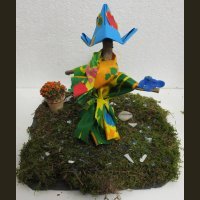
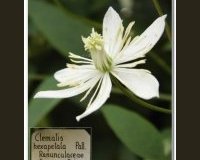
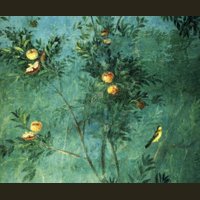
 Version imprimable
Version imprimable